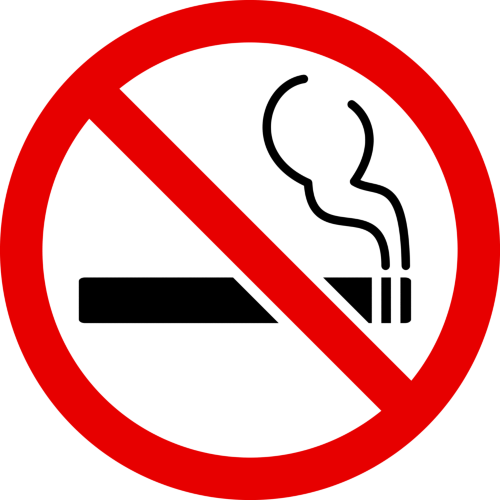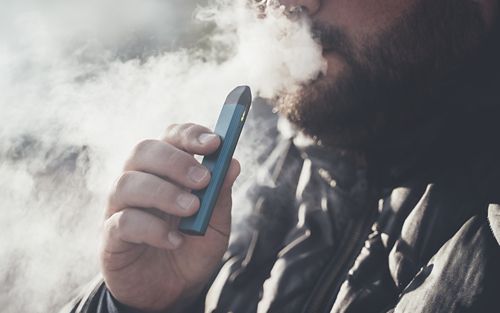Vaping is NOT safe
Many people wrongly believe that vaping is a safe alternative to cigarette smoking. This is not true. Both smoking and vaping have harmful effects on your health. Do not use vaping to stop smoking. Do not use smoking to stop vaping. It is important to avoid using one harmful habit to replace another.
Read more about the harmful effects of vaping.
Know your risk
Cigarette smoking causes cancer, heart disease, stroke, lung disease, and chronic obstructive pulmonary disease (COPD). Certain medical conditions or treatments can increase the health risks of smoking.
Childhood cancer: Childhood cancer survivors are at risk for many long-term health problems. Those risks increase with age. By age 50, more than half of childhood cancer survivors have had a serious health problem. These include second cancers as well as diseases of the heart, lungs, and other organs. Cigarette smoking adds to these risks.
Sickle cell disease: People with sickle cell disease are at higher risk for heart and lung problems. Cigarette smoking raises blood pressure and increases the risk of heart disease and stroke. Smoking has also been linked to acute chest syndrome.
Stem cell transplant: Smoking can cause serious problems for people who have had stem cell (bone marrow) transplants. Patients who smoke have an increased risk of death and of developing serious medical conditions such as heart and lung problems.
Create a plan to quit smoking
Quitting smoking is tough. Cigarettes contain nicotine, an addictive drug. For some, smoking is a social activity. Others fear they will gain weight if they quit. Many people smoke to manage stress and anxiety or improve their mood. But smoking can actually make mood symptoms worse in the long run.
Quitting smoking starts with a plan. Give yourself a couple of weeks to get ready. Steps to help you stop smoking include:
- Set a quit date. Put it on your calendar. Give yourself time to prepare.
- Make a list of your reasons for quitting. This can help you stay motivated.
- Plan ways to stay busy and distract from cravings.
- Tell friends and family so they can support you.
- Use free resources to help you. If you live in the United States, these are some resources you can use:
- Call the free 1-800-QUIT-NOW helpline by the Centers for Disease Control and Prevention (CDC) to talk to a coach.
- Sign up for free text messages at SmokefreeTXT. This National Cancer Institute (NCI) service provides free 24/7 support sent directly to your phone.
- Use a quit-smoking app. The NCI’s QuitGuide lets you track cravings and slip-ups by time and location.
Identify your smoking triggers
Know what causes the urge to smoke. Make a list of your smoking triggers. These are the people, places, and situations that set off your urge to smoke. They can be:
- Emotional: Some people smoke when they are in a good mood. Others smoke to relieve stress, reduce boredom, or cope with negative feelings.
- Routine patterns: Smoking may be tied to certain activities such as watching TV, talking on the phone, or drinking alcohol.
- Social: A party, event, concert, or bar may spark the urge to smoke.
Avoid triggers as much as possible. Develop a plan for dealing with them if they occur.
Prepare to fight cravings
Nicotine is addictive, and going without cigarettes can cause physical symptoms of nicotine withdrawal. These symptoms will go away in time.
Nicotine cravings are the worst 2–3 days after quitting and usually go away completely 4–6 weeks after quitting. Though they can be intense, they usually only last 3–5 minutes.
It is important to plan ways to fight cravings and use tools and strategies to help you quit. This may include getting support from friends and family, talking with a counselor, or using medications to help you manage nicotine withdrawal.
Ways to help manage cravings include:
- Go for a walk, exercise, or do other physical activity
- Chew sugarless gum
- Keep your hands busy
- Drink plenty of water
- Relax with deep breathing, meditation, or other relaxation techniques
- Distract yourself with an enjoyable activity
- Spend time with non-smoking friends and family
Consider medicines to help you quit smoking
Several types of medicines are available to help you quit smoking. Some are available over the counter, and some require a prescription from a health care provider. Talk with your provider before using any medicines.
Nicotine replacement therapy (NRT) helps you quit smoking by providing small doses of nicotine.
You can buy the following forms of NRT without a prescription:
- Skin patch
- Chewing gum
- Throat lozenges
These NRT products require a prescription:
These medicines do not contain nicotine. They are tablets that require a prescription:
- Bupropion SR (Zyban®)
- Varenicline (Chantix®)
Remember, there are many tools available to help you stop smoking. You may have to try several times before you quit smoking for good. But you can do it.




